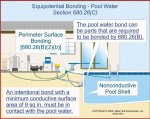gsstaley@sbcglobal.net
Member
- Location
- Houston
If the electrode is to be in constant contact with the water, where in the plumbing piping is the electrode "NOT" going to be in constant contact?
not a plumber!
not a plumber!


